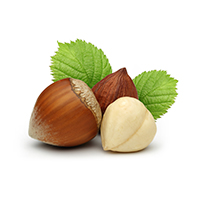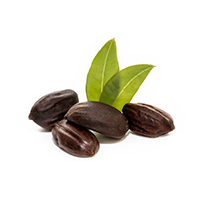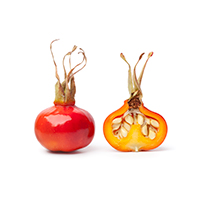Ultimate Pet Aromatherapy Guide for Dogs and Cats
A devoted pet lover and fragrance expert, Gerrard Larriett uses his over 10 years experience in the cosmetics industry to create a spa-inspired line of pet care products.
What You Need to Know About Essential Oils and Pet Aromatherapy
I draw on my decade of experience with fragrances to explain pet aromatherapy, which oils work best for dogs and cats, and how to use it. You’ll also find tips and advice from Dr. Nancy Brandt, author of four pet aromatherapy books.
Inside this article:
- Good and bad essential oils for dogs
- Ideal essential oils that work for cats
- How Does Pet Aromatherapy Work?
- Expert aromatherapy tips
What Is Pet Aromatherapy?
Pet aromatherapy is the therapeutic use of natural essential oils to restore or maintain the well-being of your dog or cat. Essential oils are botanical extracts of the volatile liquids in the bark, leaf, flower, rind, root, stem, or wood of aromatic plants.
Highly concentrated substances, essential oils are derived by distillation, cold-expression, carbon dioxide (CO2) distillation or solvent extraction methods. Despite the name, aromatherapy essential oils aren’t necessarily oily to the touch and are transparent, amber, or yellow.
Essential oils aren’t the same as fragrance oils or perfumes. Typically, fragrances contain synthetic chemicals like solvents, stabilizers, UV-absorbers, preservatives, and dyes. Pure essential oils only contain plant extracts.
Benefits of Pet Aromatherapy
Aromatherapy is a safe and effective alternative treatment for Fluffy or Fido. Essential oils are often anti agents: antiviral, antimicrobial, antibacterial, antifungal, anti-inflammatory, anti-insect, anti-toxin, anti-venom, and anti-anxiety effects offer a viable alternative to allopathic approaches.
Other benefits include the prevention of motion sickness, regrowth of fur, enhanced immunity, and mood elevation.
After opening her practice, veterinary aromatherapy pioneer Nancy Brandt DVM, CVA, CVMA, says she was still looking for therapies to address health issues that repeatedly surfaced with the animals in her care. “I really liked that the aromatherapy modality did not involve ingestion, but instead uses the natural olfactory instinct all animals share.”
 Dr. Brandt is author of four pet aromatherapy books with a new one in the works, founder and current president of the Veterinary Medical Aromatherapy Association (VMAA) and Chief Medical Officer of the Natural Care Institute and UnBound Center for Animal Wellness in Las Vegas, Nevada.
Dr. Brandt is author of four pet aromatherapy books with a new one in the works, founder and current president of the Veterinary Medical Aromatherapy Association (VMAA) and Chief Medical Officer of the Natural Care Institute and UnBound Center for Animal Wellness in Las Vegas, Nevada.
The public needs education, but the internet shouldn’t be their first resource. “Do Google searches after you have a diagnosis from your vet and know what to search for precisely,” says Dr. Brandt. “Diagnosis by concerned pet owners based on an internet search is often wrong—I see it happen time and again with my own patients. You should read books on the subject, consult with experts, or take the online course with the VMAA.”
How Does Pet Aromatherapy Work?
Pet aromatherapy usually works by absorption via inhalation or skin contact, and sometimes by ingestion. Messages sent through the nervous system to the limbic system—the part of the brain that controls emotions, rapidly enter your pet’s body and the bloodstream, and get distributed to various tissues.
Some chemicals have an affinity for specific biological tissues, and vets—or pet owners who are knowledgeable about essential oil use—use this property to target particular areas of the body with the appropriate oils.
A vital component of integrative medical care, essential oils hold an array of active and biologically potent compounds. However, essential oils can cause unwanted side effects, so veterinary professionals should seek specialized training and understand how to select reliable brands. For consumers, education about aromatherapy and how to buy appropriate essential oil brands is critical.
What to Look for in Essential Oil Brands
Always use 100 percent pure, therapeutic-grade essential oils on animals, just as you would for yourself. Even certified quality product statements may not be accurate since pet product manufacturers aren’t required to list ingredients.
“Not all essential oils are created equal,” Dr. Brandt notes. “In my Dig Deep Method book and online course, we cover the GMP and QC (current Good Manufacturing Practices and Quality Control) necessary to create a Biologically Active® essential oil (BEAO). In my practice, BEAO has demonstrated safe and effective results.”
Many essential oils are distilled or marketed for the perfume industry and may not be concerned with therapeutic grade quality questions. Ask an experienced medical practitioner you trust for purchasing recommendations.
When buying essential oils, here are some features to keep in mind:
- Check Ingredients: Quality aromatherapy products contain a small number of select ingredients, labeled 100% pure. All ingredients should be listed, exact amounts noted, and labeled as biologically active.
- Packaging: Look for oils packaged in tamper-proof cobalt, amber or violet glass bottles to prevent degradation.
- Supplier Knowledge: The right supplier should be able and ready to answer all your questions.
- Supplier Dependability: Avoid multi-level marketing companies.
- Environmental Consciousness: Verify that non-endangered plants are the basis of the product and that packaging and growing methods are eco-friendly.
- Growing Method: Look into whether plants are organic, certified, ethically produced, or wildcrafted to ensure quality.
- Latin Name + Common Name: The Latin name and common name should appear on the label.
- Origin Information: This information should include extraction information, lot number, extraction date, and country of origin.
It takes learning, time, and money to know how to purchase essential oils with quality ingredients and processing.
Pet Aromatherapy Delivery Techniques
There are three pet aromatherapy application methods: diffusion, spray, and topical application.
- Topical Application: Apply essential oils by petting and massage your pet. Animals are sensitive to essential oils, so diluting them with base oil is your first step. Using an eyedropper, create a ratio of one drop of essential oil to 1.5 tablespoons (approximately 45 drops) of base oil for a dog. This ratio equates to a dilution of about 0.25 percent. For cats, use one-part essential oil to 50 parts base oil. Put an ample amount on the palms of your hands, rub them together, and then massage the desired area of your dog or cat with a circular motion.
- Base or Carrier Oil: Carrier oils are non-irritating viscous substances used to dilute essential oils for topical application. Essential oils contain compounds that don’t mix with water, and if applied undiluted, they can cause irritation, sensitization, redness or burning, or other reactions to your pet’s skin. Base oils also have some medicinal properties.
Commonly Used Base Oils for Pet Aromatherapy
| Aromatherapy Base Oils | |
 |
Almond Oil Light texture & pleasant scent |
 |
Apricot Kernel Oil Mild smell & light texture |
 |
Avocado Oil Nourishes skin & fur |
 |
Coconut Oil Moisturizing & antimicrobial |
 |
Grape Seed Oil All-purpose & non-irritating |
 |
Hazelnut Oil Suitable for pets with oily skin |
 |
Jojoba Oil Anti-inflammatory |
 |
Rosehip Seed Oil Soothes skin conditions |
 |
Sesame Oil Suitable for dry skin |

|
Sunflower Oil Combines well with other oils |
- Diffusion: Add one to two drops of essential oil into a water-based vaporizer. Diffuse intermittently:10 minutes on, then 30 minutes off. Be sure to keep the diffuser out of your pet’s reach. Diffuse away from your pet’s usual resting spot or in another room to ensure that the pet receives a minimally concentrated dose of aromatherapy.
- Spray: Using a spray bottle or mister, spray diluted essential oil into the air. You can also spray or hold a cotton ball saturated with the mixture in front of an air condition or fan.
- Ingestion: Brandt says it’s possible to feed essential oils to pets but to do so with caution. “Is the essential oil labeled as safe for ingestion? Has there been an investigation?” asks Dr. Brandt. “What’s your technique? For example, if you add the oil atop something really watery, it may remain on the surface and hurt their lips. A good technique is to mix the oil thoroughly into a fatty type of food, or add coconut oil to better distributed the essential oil throughout the food.”
Is Pet Aromatherapy Safe for Dogs and Cats?
A great scent is nice, but efficacy is what pet aromatherapy is all about. Research studies have proven essential oils to calm, reduce pain, and improve specific disorders in dogs and cats.
“I have over 20 years of my own clinical studies and observations, and enough numbers to state that aromatherapy works in veterinary practice.” Dr. Brandt adds that you can take into account human research (there are over 100 studies listed on the University of Minnesota Taking Charge of Your Wellbeing site) as supporting evidence for essential oil use.
- Calming Emotional Effect for Dogs: A 2006 research study, published in the Journal of American Veterinary Medical Association, reported that lavender essential oil calms dogs who become overexcited in cars.
- Less Physical Pain for Dogs: A 2019 study, published in the BMC Veterinary Research, found that chamomile, marigold, sage, and John’s Wort have antibacterial and antifungal effects. These ingredients make them an exciting new option for the treatment of pyoderma (a skin disease that has pus), otitis externa (ear inflammation), infected wounds, and dermatophytosis (fungal infections) in dogs.
- Treatment for Gland Conditions for Dogs and Cats: Brandt recently published a paper drawing on her results (over 800 cases in her clinics) using essential oils to treat anal gland conditions. Over the past 20 years, Dr. Brandt has used essential oils like copaifera and boswellia sacrato to treat conditions ranging from pruritus to cancer in dogs and cats.
More completed studies and new ones exhibit that pet owners can rely on pet aromatherapy to treat a wide variety of animal medical conditions.
The VMAA, National Association for Holistic Aromatherapy, and Holistic Animal Association advocate using essential oils for a more natural, less harmful approach to animal health care.
Holistic therapies for animals came to prominence in parallel to a more organic, natural approach to human healthcare. While there are hundreds of human aromatherapy research studies available, organizations like the VMAA are working to institute more peer-reviewed animal research studies.
Animal studies or non-empirically derived reporting aren’t necessarily based on apples-to-apples comparisons of the same strength or quality of essential oils. “Current conflicting information and data stem from grouping all oils and techniques together,” states Dr. Brand. “Some essential oils are chemically toxic to your pet, while others are extremely beneficial. The VMAA is striving to develop safe and effective standards for Veterinary Medical Aromatherapy®.
“Generalizations around care are difficult to make, too, because every animal is an individual,” Dr. Brandt emphasizes, “Every pet food isn’t good for every animal, and the same goes for aromatherapy. For example, you can use pine for respiratory issues, but which pine (usually manucca) and the technique matter.”
All essential oils can be toxic if administered incorrectly through an unsafe method, and certain essential oil for dogs or cats should be avoided. You should also use sensible delivery techniques.
Expert Tips for Using Pet Aromatherapy
Experts agree that its best to ask your veterinarian about using essential oils for your pet rather than doing your own thing, particularly if your fur buddy has a pre-existing medical condition.
Once you get the go-ahead, there are other pet aromatherapy considerations:
- Never Use Essential Oils on Dog or Cat Paws: “There are four reasons that you should never apply essential oil on paws,” Dr. Brandt points out. “First, paws aren’t like our feet. Crevices allow oils to collect, which may make them more concentrated. Second, it’s the only area on pets’ bodies that have sweat glands. More moisture added to essential oils can lead to rashes if the oil collects and stays on the paw. Third, if the animal ingests the oil, it could be an issue, depending on the type of oil. And fourth, animals walk around naked and have chemical exposure that’s unknown to you. Essential oils and one or many chemicals mixed together may pose a danger to your pet.”
- Challenges in Your Home: Aromatherapy may not be beneficial for small pet birds, reptiles, fish, or small rodent pets such as gerbils or rabbits. Adverse reactions may be immediate or occur over time. If you’re using essential oil therapy for your cat or dog, move other smaller pets to a separate space.
- Storage: Since people and pets often have varying sensitivities, it’s always best to store essential oils in a sealed container away from direct heat and light. Keep aromatherapy products and essential oils out of reach of kids and pets.
- Human Trends: Hydrosols, also known as flower waters, is the less-saturated water that remains after distilling herbs or flowers in water. This current trend in aromatherapy is popular for people who may call for caution when it comes to pets. Often touted as a more natural, safer alternative to essential oils, hydrosols may be dangerous for smaller pets because the water can retain residual plant parts that can be toxic if ingested or inhaled.
- Aromatherapy Myths: Recently, the internet has been abuzz with stories that all aromatherapy diffusion makes dogs and cats ill. Using cheap oil or the wrong oil that’s known to be toxic can be harmful, but not all diffused essential oils are dangerous to pets. The other prevalent myth is that aromatherapy has no effect, good or bad. However, research shows that essential oils can be extremely beneficial for a variety of medical conditions in dogs and cats.
- Treating Pregnant or Sick Animals: Unless your vet directs treatment, don’t use essential oils on sick or pregnant pets. Some oils such as basil, cinnamon, fennel, and thyme may cause a miscarriage.
- Location, Location, Location: Don’t use essential oils near your pet’s delicate eye, nose, anal, and genital areas unless specifically directed by your vet.
Aromatherapy Essential Oils that Work Well for Dogs
With 40 times more scent receptors than people, dogs can recognize smells with up to 100,000 times greater accuracy than we mere humans. With this olfactory facility and instincts focused around scent, aromatherapy is perfect for dogs.
While every dog is an individual and may respond differently to particular essential oils, here is a list of essential oils in alphabetical order and potential benefits to consider.
Essential Oils for Dog Aromatherapy
| Name Plant Origin/Latin Binomial |
Potential Benefits |
| Angelica Root Angelica archangelica |
|
| Basil Ocimum basilicum |
|
| Bay Leaf Laurus nobilis |
|
| Bergamot Citrus bergamia |
|
| Camphor Tree Cinnamonum camphora |
|
| Black Pepper Piper nigrum |
|
| Cacao Theobroma cacao |
|
| Caraway Carum carvi |
|
| Cardamom Elettaria cardamomum |
|
| Carrot Seed Daucus carota |
|
| Cedarwood Cedrus atlantica |
|
| Chamomile, German Matricaria recutita |
|
| Chamomile, Roman Anthemis nobilis |
|
| Cinnamon Leaf Cinnamomum zeylanicum |
|
| Cistus Cistus ladanifer |
|
| Citronella Cymbopogon |
|
| Clary Sage Salvia sclarea |
|
| Clove Syzygium aromaticum |
|
| Coriander |
|
| Cypress Cupressus |
|
| Elemi Canarium luzonicum |
|
| Eucalyptus Eucalyptus radiata |
|
| Fennel (Sweet) Foeniculum vulgare |
|
| Frankincense Boswellia |
|
| Geranium Pelargonium graveolens |
|
| Ginger Zingiber officinale |
|
| Helichrysum Helichrysum italicum |
|
| Lavender Lavandula |
|
| Mandarin (Green) Citrus reticulata |
|
| Marjoram (Sweet) Origanum marjorana |
|
| Myrrh Commiphora myrrh |
|
| Niaouli Melaleuca quinquenervia |
|
| Nutmeg Myristica fragrans |
|
| Opopanax Commiphora glabrescens |
|
| Orange (Sweet, Blood) Citrus sinensis |
|
| Patchouli Pogostemon cablin |
|
| Peppermint Mentha piperita |
|
| Petitgrain Citrus aurantium |
|
| Rose Rosa damascena |
|
| Rosemary Melaleuca ericifolia |
|
| Spearmint Mentha spicata |
|
| Spikenard Nardostachys jatamansi |
|
| Tangerine Citrus reticulata |
|
| Thyme Linalol Thyme vulgaris, chemotype linalol |
|
| Thyme Thujanol Thyme vulgaris, chemotype thujanol) |
|
| Valerian |
|
| Vanilla Vanilla planifolia |
|
| Vetiver Vetiveria zizanioides |
|
Essential oils in this table are well tolerated by most dogs for topical, diffusion, and spray aromatherapy techniques.
When negative symptoms occur in your dog, it may only be due to an allergy that can be confused with oils being “harmful.” Allergies aren’t the only reason for adverse reactions: according to Dr. Brandt, underlying conditions, interaction with other medications or toxic substances in the environment, or incorrect dosing may be the cause. Always keep essential oils away from your pets and never leave aromatherapy or potpourri unattended.
While many of the essential oils listed here are also safe for ingestion, it’s a good idea to consult first with a veterinarian to determine the right amount and delivery techniques to help heal your pet.
Potentially Toxic Essential Oils for Your Dogs
| = Toxic for this use | |||
| = Research inconclusive for this use | |||
| = OK for this use | |||
| Based on our research and comparison of multiple sources: | |||
| Common Name | Plant Origin | Ingestion | Inhalation |
| Anise | Pimpinella anisum | ||
| Birch | Betula | ||
| Bitter Almond | Prunus dulcis | ||
| Boldo | Peumus boldus | ||
| Calamus | Acorus calamus | ||
| Cassia | Cassia fistula | ||
| Chenopodium | Chenopodium album | ||
| Garlic | Allium sativum | ||
| Goosefoot | Chenopodium murale | ||
| Horseradish | Armoracia rusticana | ||
| Hyssop | Hyssopus sp. | ||
| Juniper | Juniperus sp. | ||
| Mugwort | Artemisia vulgaris | ||
| Mustard | Brassica juncea | ||
| Oregano | Origanum vulgare | ||
| Pennyroyal | Mentha pulegium | ||
| Red Thyme | |||
| Rue | Ruta graveolens | ||
| Santolina | Santolina chamaecyparissus | ||
| Sassafras | Sassafras albidum | ||
| Savory | Satureja | ||
| Tansy | Tanacetum vulgare | ||
| Terebinth | Pistacia palaestina | ||
| Thuja | Thuja occidentalis | ||
| Wintergreen | Gaultheria procumbens | ||
| Wormwood | Artemisia absinthium | ||
| Yarrow | Achillea millefolium | ||
| Ylang Ylang | Cananga odorata | ||
Many of these essential oils or substances in their original botanical form—like anise, garlic, horseradish, mustard, and oregano—are commonly and safely used in people’s food recipes, yet cause irritation, illness or even death for some canines. Toxicity of any of these oils can vary based on the dog and the condition, quality and quantity of the oil. Always consult a vet before exposing your dog to these oils and keep these substances away from your pet when cooking or enjoying personal aromatherapy sessions in your home.
Pet Aromatherapy Smells that Work Well for Cats?
| Common Name Plant Origin/Latin Binomial |
Potential Benefits |
| Calendula Calendula officinalis |
|
| Catnip Nepeta cataria |
|
| Cedarwood Cedrus atlantica |
|
| Copaiba Copaifera officinalis |
|
| Eucalyptus Eucalyptus citriodora |
|
| Fennel Foeniculum vulgare |
|
| Frankincense Boswellia carteri |
|
| Helichrysum Helichrysum italicum |
|
| Jasmine Jasminum officinale |
|
| Lavender Lavandula angustifolia |
|
| Lemongrass Cymbopogon flexuosus |
|
| Marjoram Origanum majorana |
|
| Myrrh Commiphora myrrha |
|
| Peppermint Mentha piperita |
|
| Roman Chamomile Chamaemelum nobile |
|
| Rosemary Rosmarinus officinalis |
|
Cats have different reactions to many essential oils than dogs, but they also benefit from aromatherapy and essential oils.
Which essential oils should you avoid using on or near your precious cat? Cats’ livers don’t easily gluconuridate, a fundamental step in the metabolism of chemical compounds. Phenols and monoterpene hydrocarbons are corrosive and difficult for cats to metabolize. Be aware of what you’re giving your cat and talk to your vet before using aromatherapy.
Essential Oils that Are Bad for Cats
Because cats are small, they are susceptible to poisoning by lower volumes of essential oil. Cats grooming tendencies also means that skin contact can make for oral contact, so keep an eye on your cat for signs of distress.
Types of Pet Aromatherapy Products
There is hardly any classification of pet grooming or healthcare product that hasn’t been enhanced by the addition of essential oils to improve your pet’s emotional and mental physical well-being. Here are some products that feature the benefits of aromatherapy.
- Pet Aromatherapy Grooming Products: Pet care products such as dog shampoos, cat shampoo, dry skin treatments, and ear cleansers infused with helpful essential oils that promote good health also smell wonderful. These products are also good for pet parents, too.
- Pet Aromatherapy Calming Products: Stress and anxiety-relieving candles and sprays infused with relaxing essential oils like lavender provide relief for humans and pets.
- Aromatherapy Cleaners and Fresheners: Pet odor elimination products like sprays, breath fresheners, pet odor eliminator candles, and stain removers are a safe alternative to chemical-laden solutions. And thanks to essential oils explicitly chosen for their lovely aroma and cleansing power, they are uniquely effective products that leave your home and pets smelling fresh.
A Brief History of Pet Aromatherapy
Since ancient times, essential oils and aromatherapy have served medical purposes for humans and animals. For example, Egyptian texts, the Bible, and Koran reference essential oils and unguents.
Ancient Greek, Roman, Chinese, Indian, and many Middle Eastern civilizations distilled botanicals to extract essential oils for ceremonial, cosmetic and healing purposes, and the technique was perfected by the Persian physician Avicenna around 1,000 BCE. In the 1400s, the physician Paracelsus treated leprosy with plant extracts. Throughout the 1700 and 1800s, pharmacists, doctors, and other healers prescribed essential oils and aromatherapy for their patients and their pets.
In the early 20th century, Rene Maurice Gattefossé, a French chemist and perfumer, built on existing knowledge of lavender oil’s curative properties. He healed the burns that wounded him in a lab explosion and went on to originate the term aromatherapy. Based on Gattefossé’s work, during World War II, French surgeon Jean Valnet used essential oils to heal soldiers’ wounds and subsequently wrote L’Aromatherapie, published in the 1950s.
Help Your Pet with Gerrard Larriett Aromatherapy Products
Ready to start seeing the healing effects of aromatherapy on your furry friend? Our goal is to create a soothing experience for you and your pet. We have a variety of products that can help calm and relax your pet while leaving your home smelling delightfully fresh and clean. We thoughtfully select each ingredient in our line of aromatherapy pet odor candles and pet grooming products to take the stress out of bath time.
Veterinarians and groomers around the globe highly recommend our spa-inspired line, and you’ll find that our pet care regimen offers a wide range of inviting aromas that will leave you and your pets in a state of ultimate relaxation. All our products—from grooming to our pet odor, eliminating candles—are 100 percent natural and locally sourced. That means no harmful chemicals, ever!
Learn more about our line of soothing and relaxing pet aromatherapy products.



